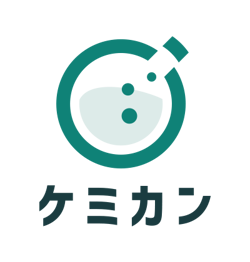Updated April 3, 2025
SPI Tests in Japan: Everything You Need to Know in 2025
The road to job hunting in Japan is a bumpy one — there’s no denying that.
You have to prepare multiple types of resumes, plus a cover letter if you’re applying to an international company. And even then, you’re not guaranteed an interview. With most traditional companies only hiring during certain periods when a new crop of graduates becomes available, mid-career candidates have an even harder time looking for a job.
During your job hunt, not only do you have to jump through hoops, but you may also be required to take an aptitude, or “SPI” test.
That’s right — it’s common for traditional Japanese companies to require an aptitude test, and today we’ll talk about the most common one in use, the SPI test.
Let’s take a look at what the SPI test is all about first, and then I’ll explain whether you need one and how you can prepare for it if you do.
What Is an SPI Test?
I already mentioned that it’s an aptitude test, but what exactly is the SPI test?
SPI stands for “Synthetic Personality Inventory,” and it’s actually one of the many aptitude tests that are in use in Japan. The SPI is the most used and streamlined one, and some companies even have their own versions of the test that are sometimes simplified or have added sections.
The test consists of multiple-choice questions, and it was developed by the Recruit Career Co. The SPI is currently used by approximately 12,000 companies in Japan.
Basically, the SPI test is aimed at assessing things about the candidate's personality that can’t be measured in an interview.
When you apply for a job, an SPI score is usually requested in addition to your rirekisho (Japanese resume) and shokumu-keirekisho (Japanese CV document). I’ve covered each of these topics in detailed guides, in case you need to prepare them from scratch. They all include examples as well.
Specifically, the SPI test is designed to assess your reading comprehension and grasp of the Japanese language, your personality, and your mathematical and statistical skills.
Even though there is an English version of the SPI test, most companies will require you to take the Japanese one, even if they promise not to base their decisions on your score.
As a foreigner, you might also be able to convince a company not to require an SPI test result on the basis of unfairness, but the chances are minimal. If you need resources to brush up on your Japanese skills, you can check out my guide to the best Japanese learning tools.
Alternatively, if you’re also considering taking the JLPT, you can head on over to my post on how to prepare for the JLPT, which you may find useful.
How SPI Tests Are Used in Japan
The SPI test is yet another metric for companies to decide whether you’re a good fit for the job. Still, it’s an important one, especially if you’re applying to a traditional company in Japan.
Companies that receive many job applications use the SPI test as a preliminary elimination method. This way, the number of candidates to be interviewed is reduced to a manageable amount.
Basically, companies are looking for emotionally stable candidates who know how to behave in a professional setting. They also don’t want to waste their time on candidates who can’t solve basic math problems or can’t make logical deductions.
However, as I mentioned, the test is usually popular among larger, more traditional Japanese companies. If you’re applying to modern tech companies or tech startups like the ones on the Japan Dev company list, you’re less likely to be asked for an SPI test result.
What Are the Chances You’ll Need to Take an SPI Test?
As I mentioned, these tests are common at traditional Japanese companies. If you’re applying for a tech job like software developer or UI/UX designer at an international company, you probably won’t be asked to take an SPI test.
Also, it’s less common at startups, so if you join a small, growing company you probably won’t need to take an SPI test.
Even if you are required to take an SPI test and you feel it didn’t go well, you may not need to worry. A lot of companies will understand — especially if you’re still learning Japanese. And usually they care far more about your skills and experience than your SPI test result.
What’s on the SPI Test?

The SPI test is made up of two main sections.
The first section is designed to test your general skills, and it includes both mathematical questions and questions that test your reading comprehension.
The second section is about your personality, and its aim is to assess your character, as well as how well you handle your emotions.
Let’s have a closer look at both sections.
Skills Test: Language and Math
The first section of the test, which assesses your general skills, has two parts. The first part is about the Japanese language and the second one pertains to math and logic.
In the Japanese language part, you’ll have to answer multiple-choice questions about vocabulary, synonyms, and idioms. You’ll also have a section that focuses on reading comprehension, where you’ll be given small paragraphs for each question, and you’ll be asked to answer the questions according to the texts.
The mathematics part is aimed at assessing your problem-solving skills. You’ll answer math problems that require simple calculations, as well as questions that are related to probability and logic.
Personality Test
The second section of the test is about your personality. Here, you’ll answer questions about your character, emotions, and behavior. There are 300 questions in this section, and the structure of the questions is a little different.
The personality test questions are also divided into two parts. In the first part, you need to pick one of two statements that you agree with. In the second one, you’re given a statement, and you need to choose whether you agree or disagree.
In addition to these, some tests may include a separate English section that lasts for about 20 minutes, and some companies may even omit the Japanese section completely and only have English language questions. It all depends on the company you apply to — you should check their requirements to be certain.
Timing Is Crucial

For the first section of the test, you normally have 35 minutes in total to answer all of the questions in both parts. As there are multiple ways you can take the test, which I’ll explain below, in some cases, you may be given only 30 minutes for this whole section.
For the second section, which is the personality test, you’ll be asked to answer 300 questions in 30 minutes.
As you can tell, timing is the most crucial factor in taking the SPI test. The questions themselves aren’t that hard, but you need to have good time management skills in order to ace the test.
As a foreigner, especially if your Japanese skills aren’t that great, you’ll probably spend most of your time just reading the questions. Therefore, I recommend taking as many practice tests as possible to time yourself. Working on making decisions quickly and not dwelling on a single question.
How to Take the SPI Test
There are mainly four ways you can take the official SPI test.
It depends on the company you apply to, but essentially, you can either take the test on paper or digitally.
The company you apply to might ask you to come to the company premises to take the test on either a computer or on paper. Alternatively, you can also take the test at a test center on a PC, which is what most candidates do, or you can take it at home on your own PC.
The only difference is that the skills section takes 5 minutes longer on paper, which makes the total runtime of the exam 70 minutes instead of the usual 65.
Scores Are Personal
Once you take the SPI test, you won’t be able to check your score. That’s right — your score will only be visible to the companies you submit it to, and you can’t know for sure how well you did.
Luckily, your score is valid for a year, and you can submit it to as many companies as you want in this timeframe.
A good way to gauge how well you did is to apply for a job at a company with very high requirements for your score. If you pass, you’ll know your score is on the higher side, and you can use it for all of your applications.
Do keep in mind, though, that the results are all personal, and they help recruiters place you in the correct position, in the correct department. For instance, if your results show that you’re an introverted person who excels at tasks that can be completed alone, the recruiter will place you in a position where you can work mostly by yourself.
Similarly, a company that’s looking for a candidate with good math skills may reject your application, but you may very well find a different type of position at a different company with the same SPI results.
How to Prepare for SPI Tests in Japan

Just like any test, the SPI test also requires adequate preparation. Although it’s a fairly easy exam, the biggest challenge is getting the timing right. So, I recommend timing yourself as much as possible when taking practice tests.
Alternatively, as you’ll be reading a lot of Japanese in a very short period, I recommend regularly reading Japanese as you study daily. This will help you become a fast reader.
Since the exam is available everywhere and you can take it multiple times on your own, it’s a good idea to take the exam before you start studying and see where you are in terms of speed. You won’t see your results, but you’ll get a feel for how you did anyway.
If Japanese isn’t your first language, it’s also a good idea to study synonyms and antonyms, as well as common proverbs and phrases. As I mentioned in my post on “how hard it is to learn Japanese,” you can utilize tools such as flashcards or mnemonic devices to memorize certain words and broaden your vocabulary.
As for the math section, solving as many tests as possible is the best way to go. There’s usually a certain pattern to the required problem-solving methods, which you’ll easily be able to recognize if you solve enough test questions.
You can also find plenty of SPI test preparation books online and in bookstores in Japan. These books usually give great insight into what the general structure of the questions will be like.
Lastly, don’t forget to check what type of test the company you want to apply for requires before you start studying. Some companies require the regular SPI, while others may have their own modified versions with added or omitted sections.
SPI Practice Tests: Where To Find Them
Before I go, I’d like to leave a few resources for preparing for the SPI test, as well as for practice tests.
As I mentioned, SPI preparation books are immensely helpful and should be your go-to. You’ll find them in pretty much every bookstore in Japan.
Alternatively, you can use web resources such as SaisokuSPI, which has detailed guides for different versions of the test.
For the math and logic questions specifically, you can use the SPI exercises on the Unistyle website, which includes detailed videos for specific types of questions.
Lastly, for practice tests, you can once again use the SaisokuSPI website, as well as SmartSPI, which simulates the real test. Alternatively, you can also check out these smaller tests by Otona Juku and Caritas Recruitment.
If you’re job hunting, don’t forget to check out my post on how to find a job as a software engineer in Japan as well, which is a comprehensive guide I’m sure you’ll benefit from.
Get Job Alerts
Sign up for our newsletter to get hand-picked tech jobs in Japan – straight to your inbox.









